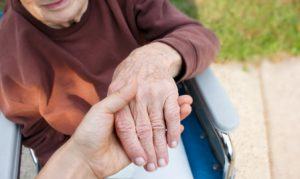Search
Wheelchair Patients Must Be Supervised To Avoid Injury & Death
 As a nursing home attorney, most of my cases fit cleanly within one category of negligence – bedsores, falls, elopement, medication errors or choking. Recently, I feel like I may need to add ‘wheelchair accidents’ to the list of these primarily preventable and tragic situations.
As a nursing home attorney, most of my cases fit cleanly within one category of negligence – bedsores, falls, elopement, medication errors or choking. Recently, I feel like I may need to add ‘wheelchair accidents’ to the list of these primarily preventable and tragic situations.
Wheelchair accidents too common in the long-term care setting
When I say wheelchair incidents, I am referring to any of a number of situations where a patient harmed to a poor instruction or supervision on the part of the facility staff. Examples of wheelchair incidents include:
- Patients who fall or are dropped while getting into or out of a wheelchair
- Patients sliding from a wheelchair while left unattended
- Staff failing to secure wheelchair patients into a van or bus
- Pressure sores developing because a patient is left in a wheelchair for extended period
- Patients legs caught on doorways when attendant staff fail to look where they are pushing the patient
- A serious injury resulting from a fall or spill from a wheelchair that without properly locked wheels
The innocent sound of ‘wheelchair’ is particularly deceptive
I was again reminded how this seemingly innocent emblem of ‘old age’ can turn deadly when I read about an incident at an assisted living facility where a wheelchair bound patient rolled down a decline and fell out of here wheelchair. As reported by DecaturDaily.com, 94-year-old Elizabeth Street remained largely confined to her wheelchair was a patient at an assisted living faculty where the facility was in the process of conducting a fire drill. Apparently, Ms. Street’s wheelchair rolled down a decline and threw her out of the chair into an adjacent ditch. There days after the incident, Ms. Street died due to an apparent series of medical complications she developed following the fall. According to the article, Ms. Street’s son is unsure if he’s interested in pursuing the facility for their role— or perhaps inattention—involving his mother’s death. Certainty, he is entitled to his opinion and may do as he deems best, but at the very least I would encourage him to report this incident to the state department of health to help get more information about this incident and the staff’s involvement.
Legal obligation of staff to provide supervision for wheelchair patients
If it turns out that a staff member brought Ms. Sweet outside for the fire drill and selected the area where she was placed— yet failed to engage the brake on the wheel, I would humbly suggest that this omission— as innocent as it may appear—deserves to be pursued and prosecuted. Too often, staff at facilities are never given any training themselves on how to safely use wheelchairs themselves or how patients are to be taught on how to use these apparatuses. Medical facilities need to remember that many of the patients who are in wheelchairs may never have used one of these devices in the past and indeed need instruction about safe operation— including what they can and cannot do. By recognizing that wheelchairs are more than a device that can be used for convenience— but rather a medical device that is necessary for some patients’ safety, incidents such as this can hopefully be reduced or eliminated.
 Nursing Home Law News
Nursing Home Law News

